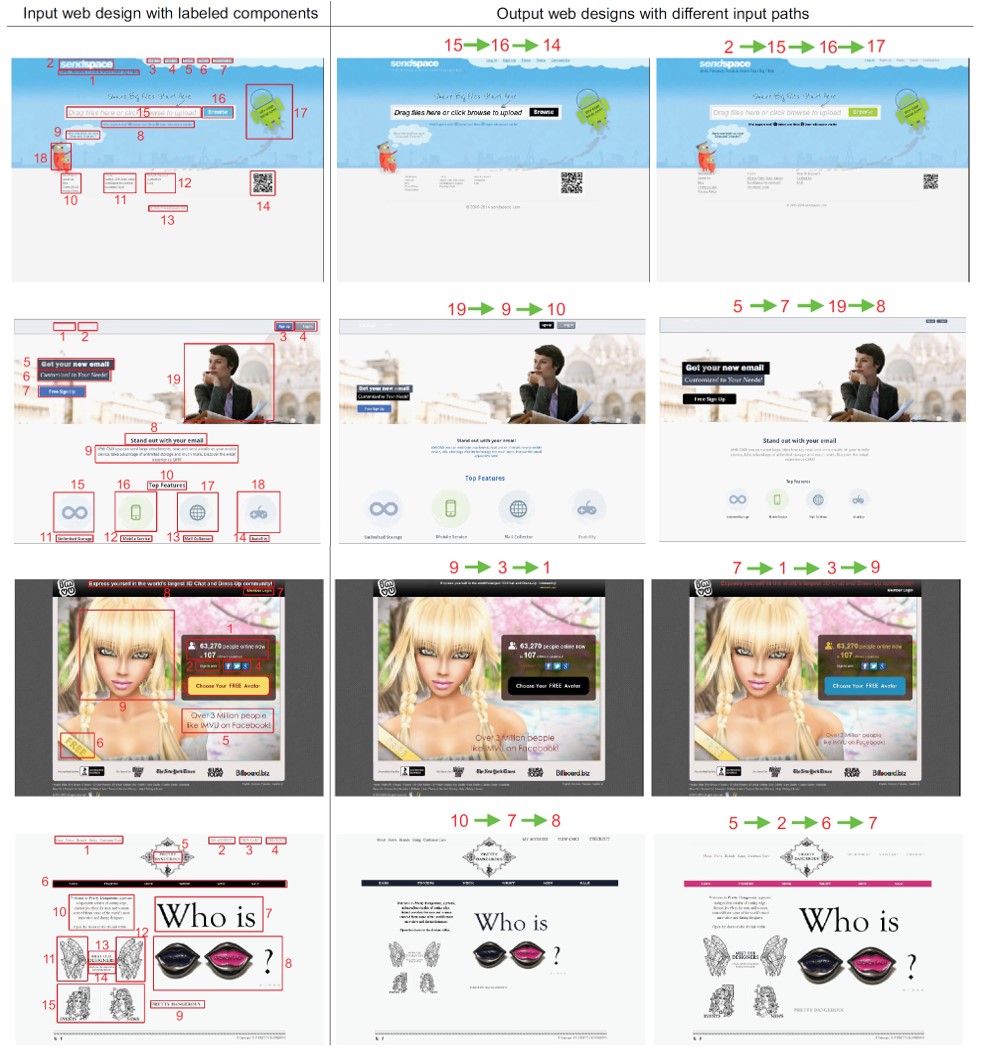
Opportunity
With webpages having become a ubiquitous medium of communication, much work has been done on detecting which components of a webpage most attract the attention of users. For example, EyeQuant is an online service that analyzes a given webpage and predicts the locations that users will be most likely to look at. These predictions can then be used by developers to improve webpage design.
However, user interaction with a webpage depends not just on where users look but also on when they look at specific regions. When browsing a commercial webpage, users might be more likely to make a purchase if they see a “SALE” sign before they see their favorite product.
This invention is a webpage interaction design technique that guides webpage developers in viewing various webpage components in a specified order. The technique enables designers to take a high-level approach to the webpage, as the designers can calibrate for the temporal order of navigating webpage components. The technique also automatically refines a webpage based on the specified reading path. Together, these two functions can allow web designers to manipulate how users’ eyes navigate multiple regions of a webpage while also reducing the time and effort that designers need to spend on improving page design.
Technology
This invention consists of three discrete techniques. First, there is a webpage interaction design technique that allows a designer to specify a list of components on a webpage along with various properties of the webpage such as color, layout, and component size. This technique bases a webpage’s layout on the chronological order in which the user looks at the webpage, so that the user will view information more efficiently.
The design technique makes use of the second aspect of this invention, which involves two different attention models. One of these models can predict the probability of user attention moving from one webpage component to another, while the other model can predict the probability of a particular component being visited before another. The parameters for both models have been learned from eye movement data collected from different users browsing web pages. Unlike other visual attention models, these models predict how user attention moves in both spatial and temporal ways.
Finally, the third aspect of this invention is a technique that allows webpage designers to adjust a webpage in accordance with a predetermined user reading path.
Advantages
- Current webpage analytics services like EyeQuant provide web designers with analysis results that leave low-level design refinement to be manually done by the designers, while this invention provides designers with an approach that allows them to conceptualize web design at a higher level.
- This invention involves a technique that can automatically adjust webpages in accordance with a specified reading path, thereby allowing web designers to make changes in direct interaction with how users navigate a site.
- Because this invention allows designers to make automatic changes, the time and effort involved in improving page design can be dramatically reduced.
Applications
- This invention can be used by both amateur and professional web developers.




